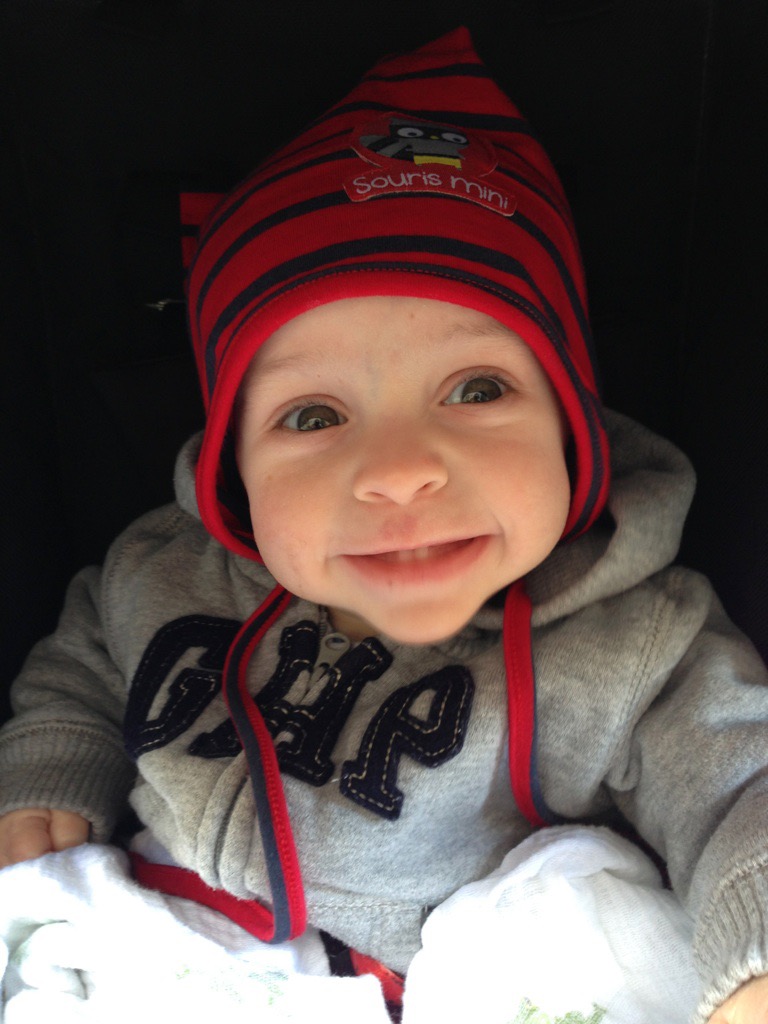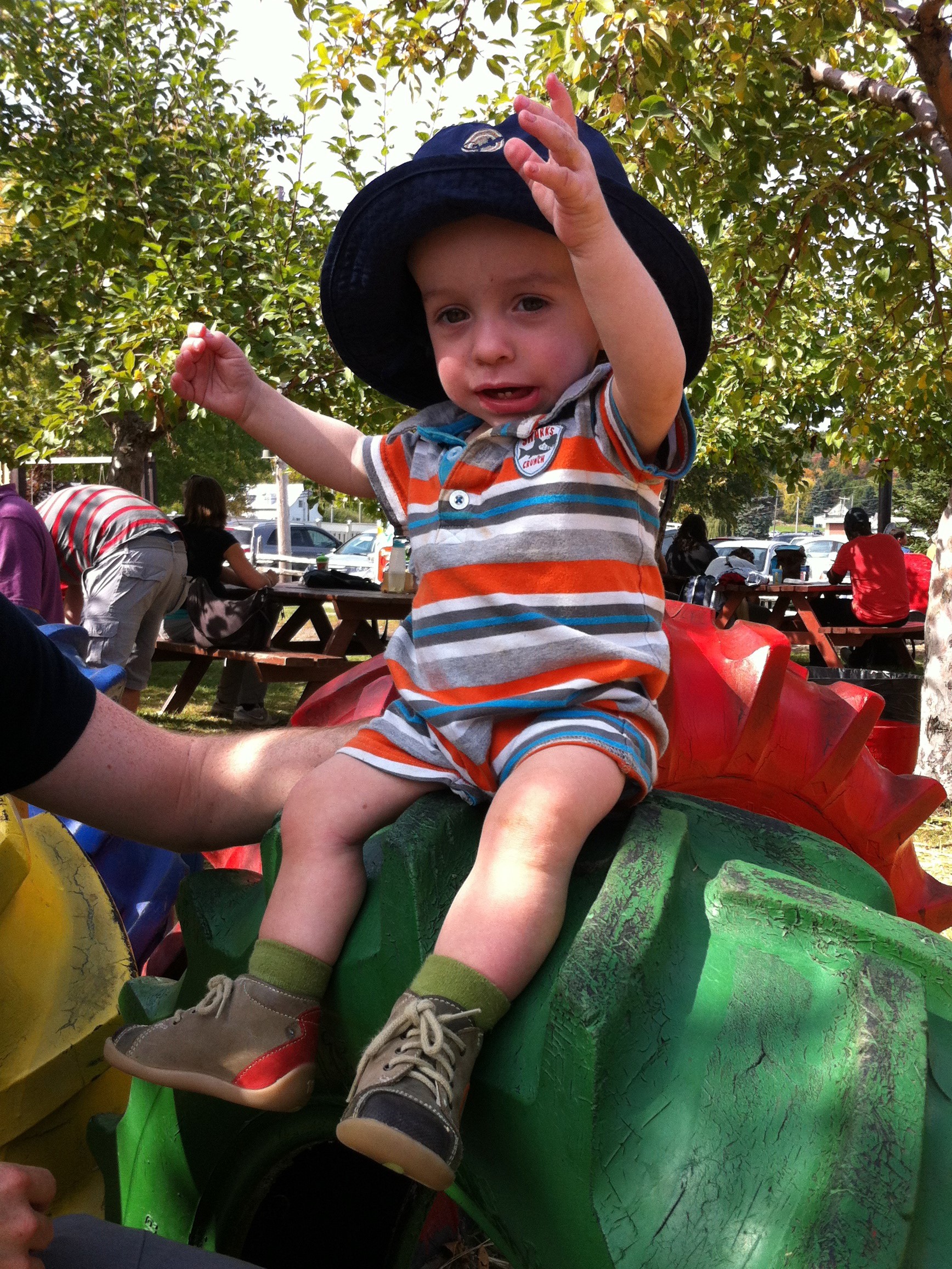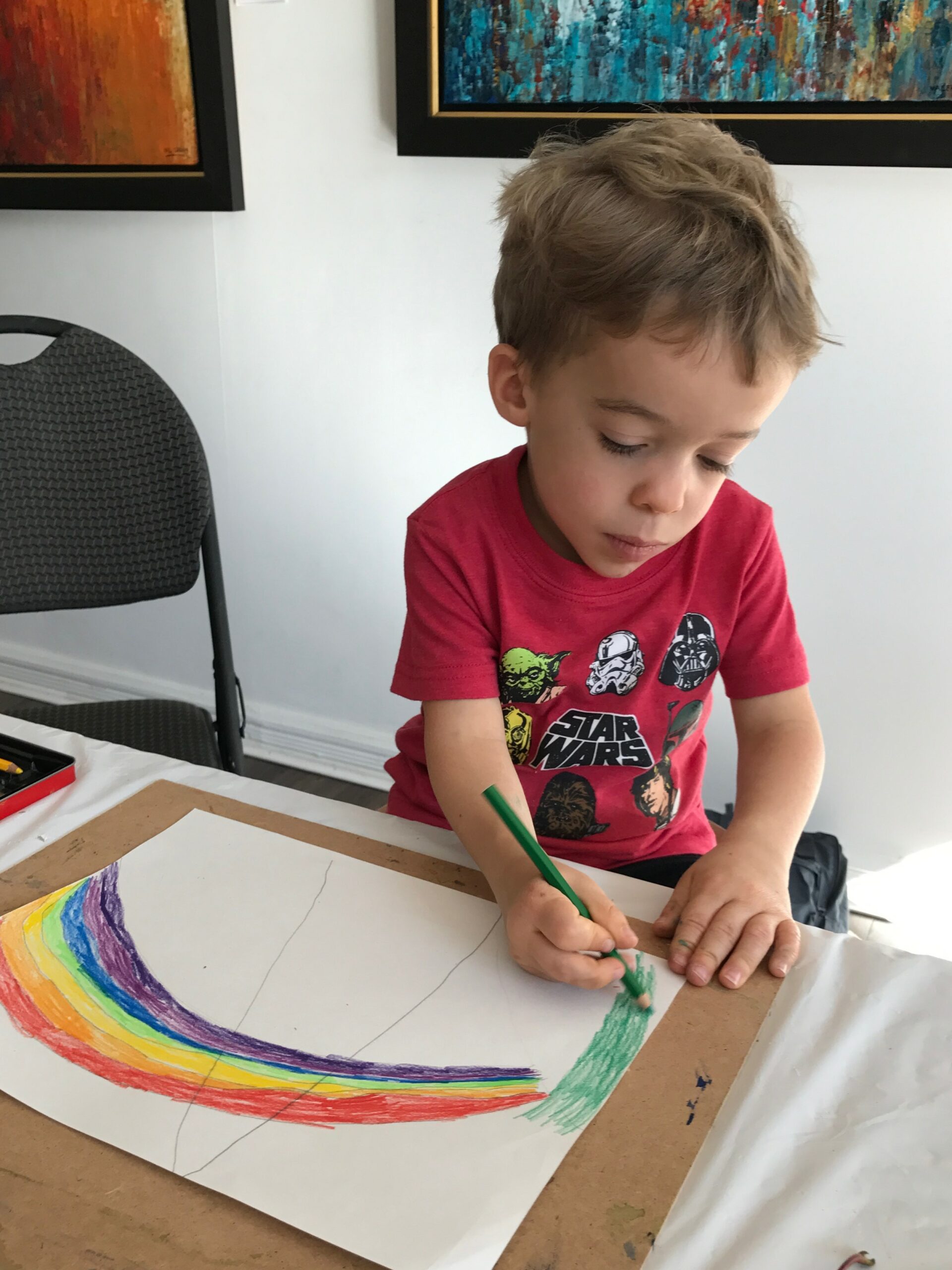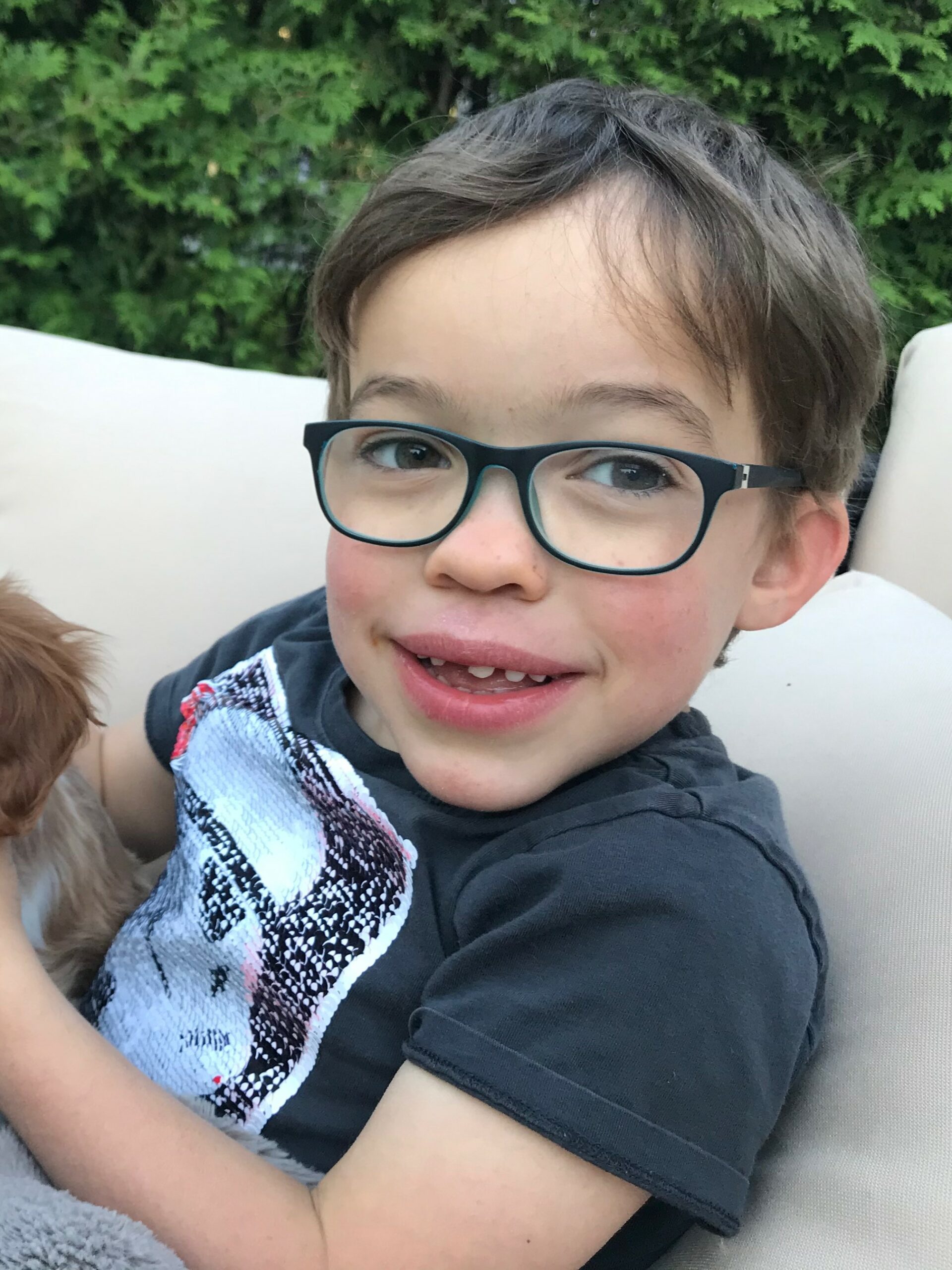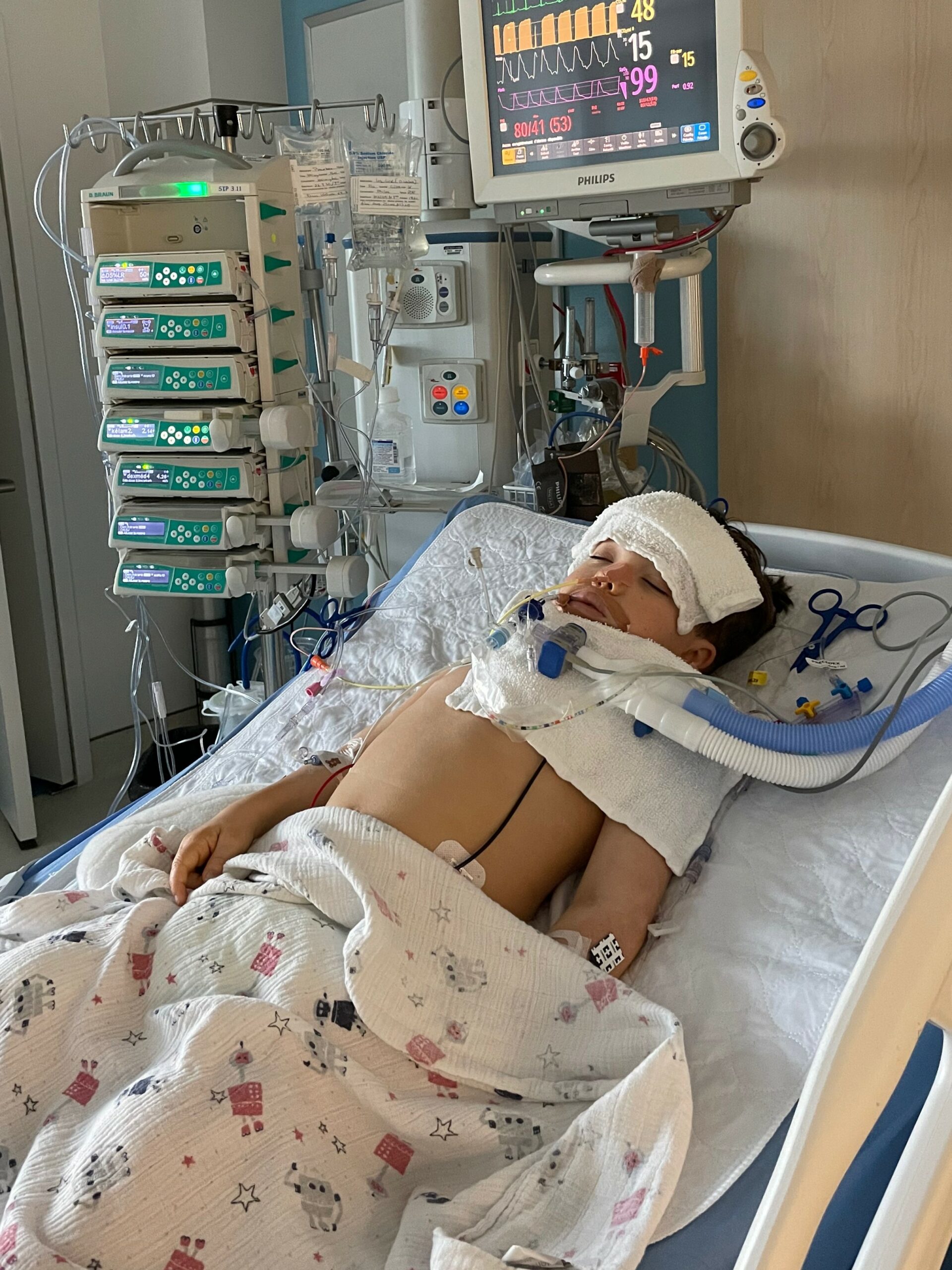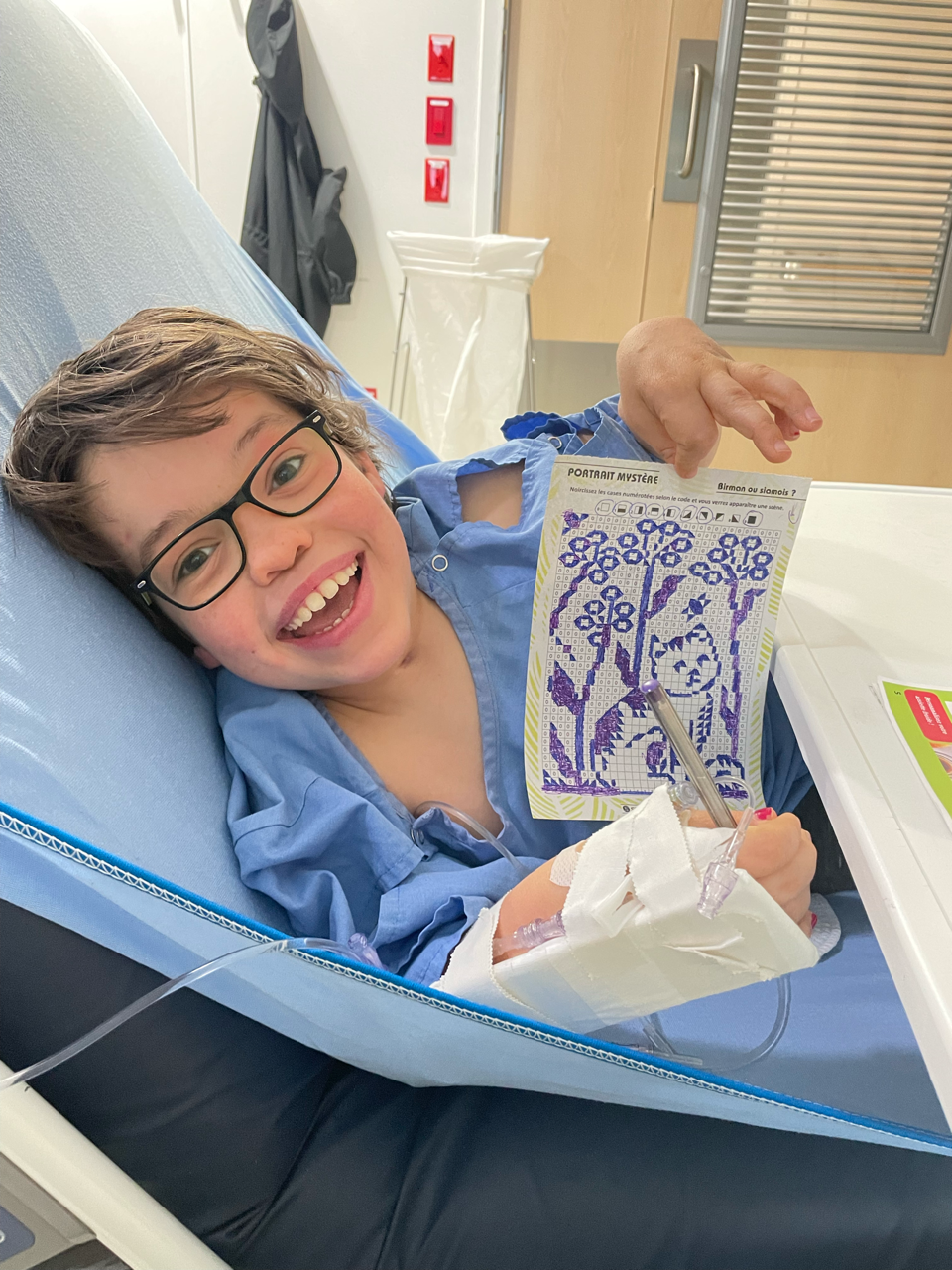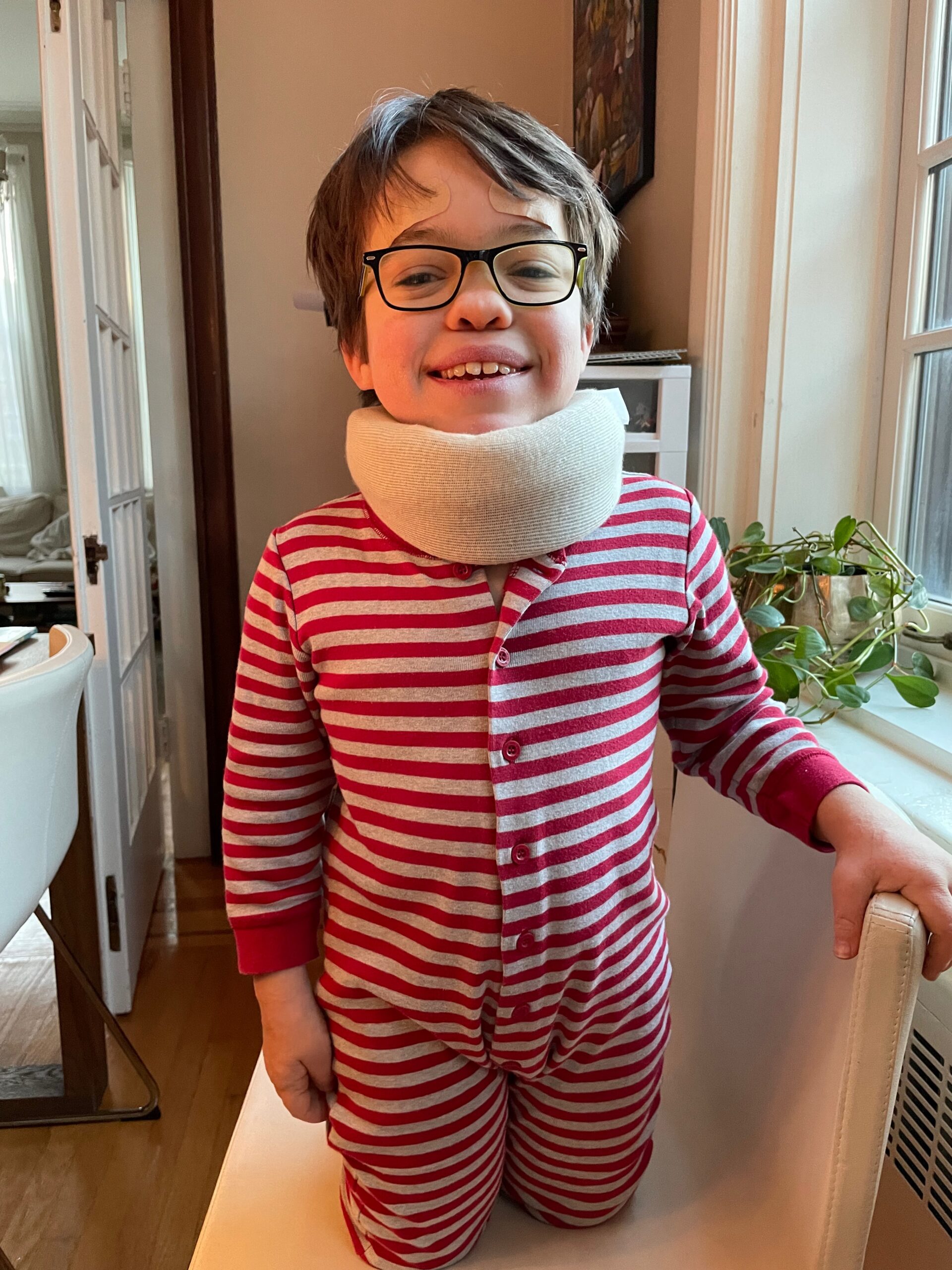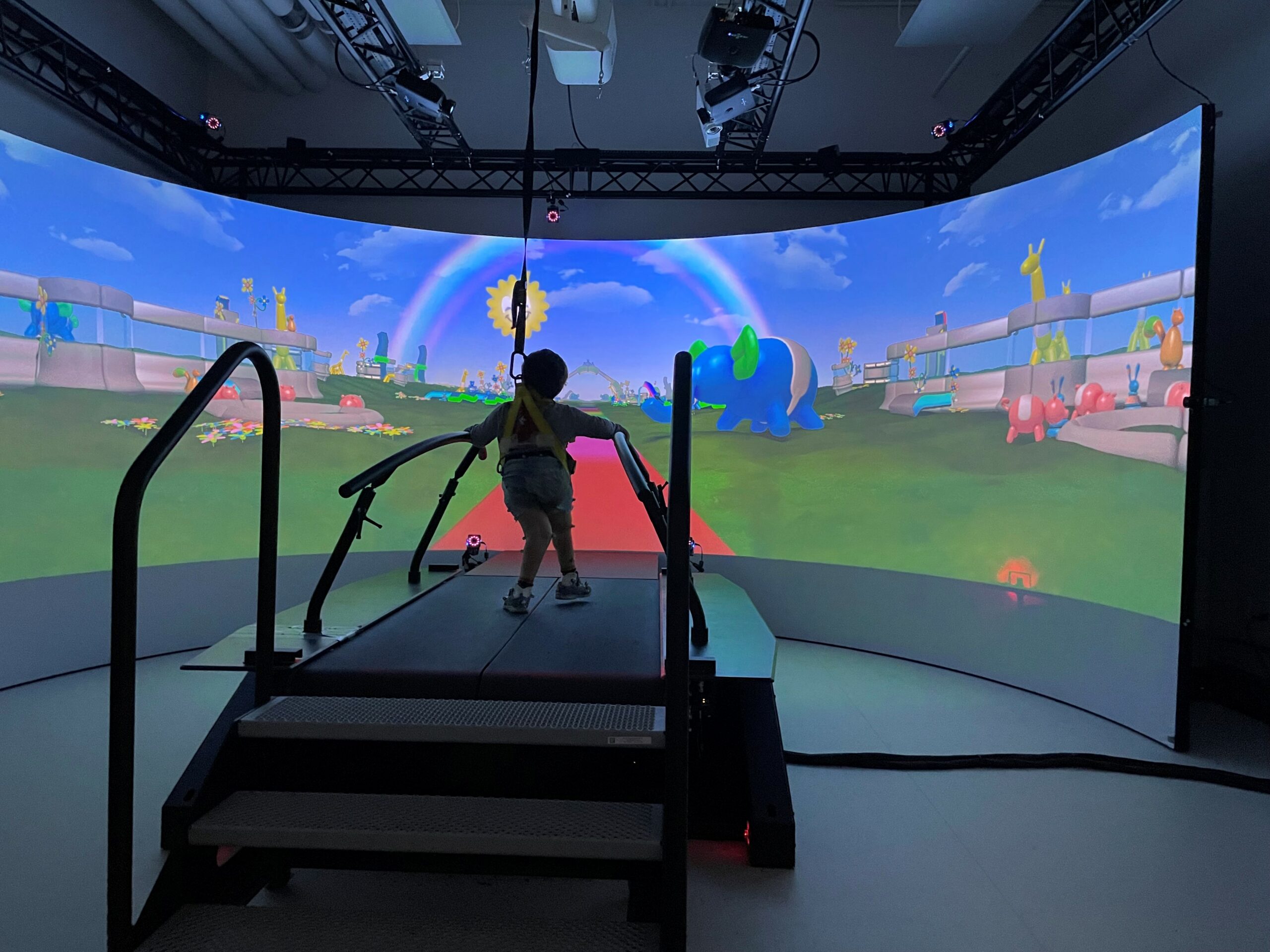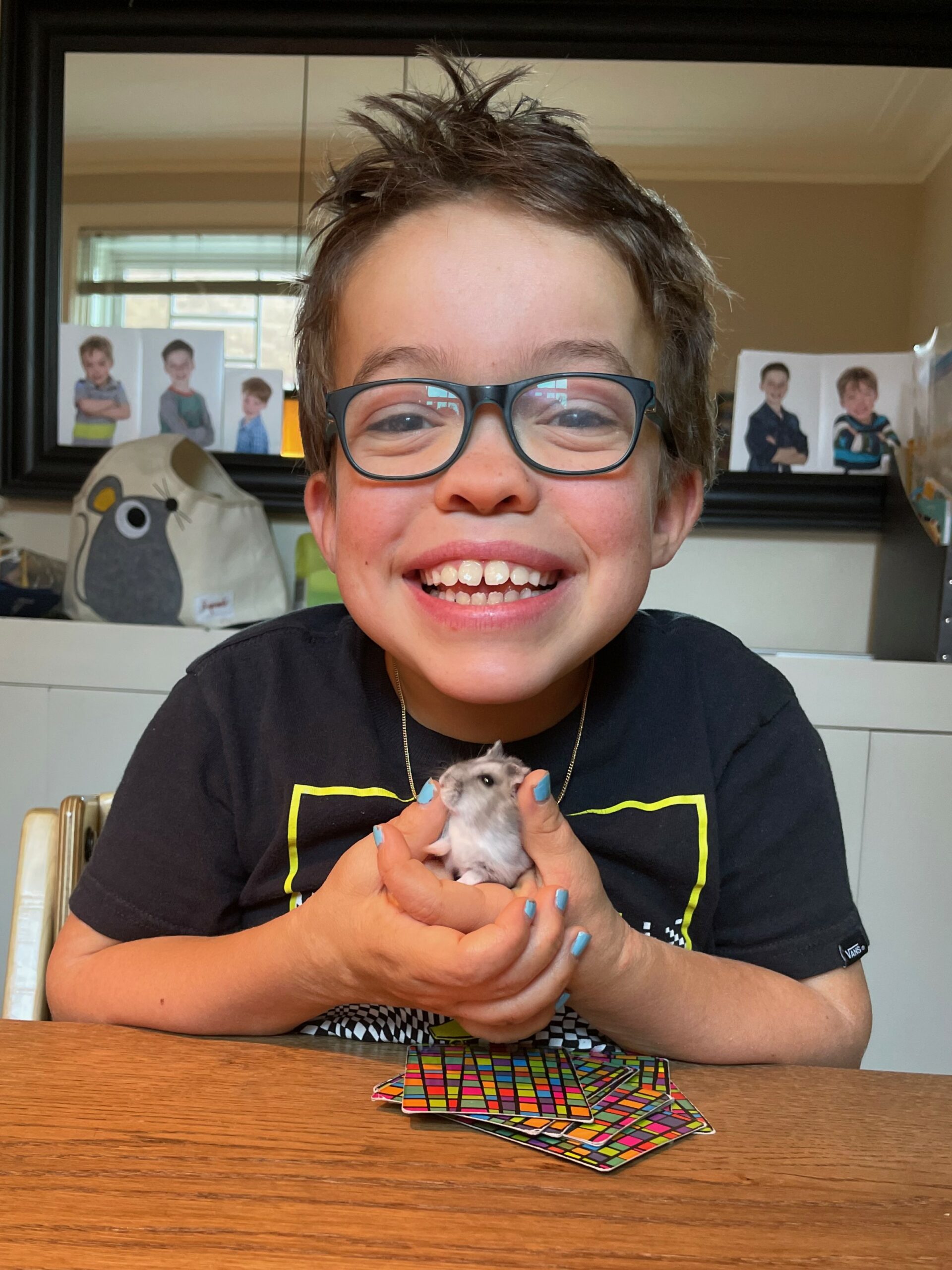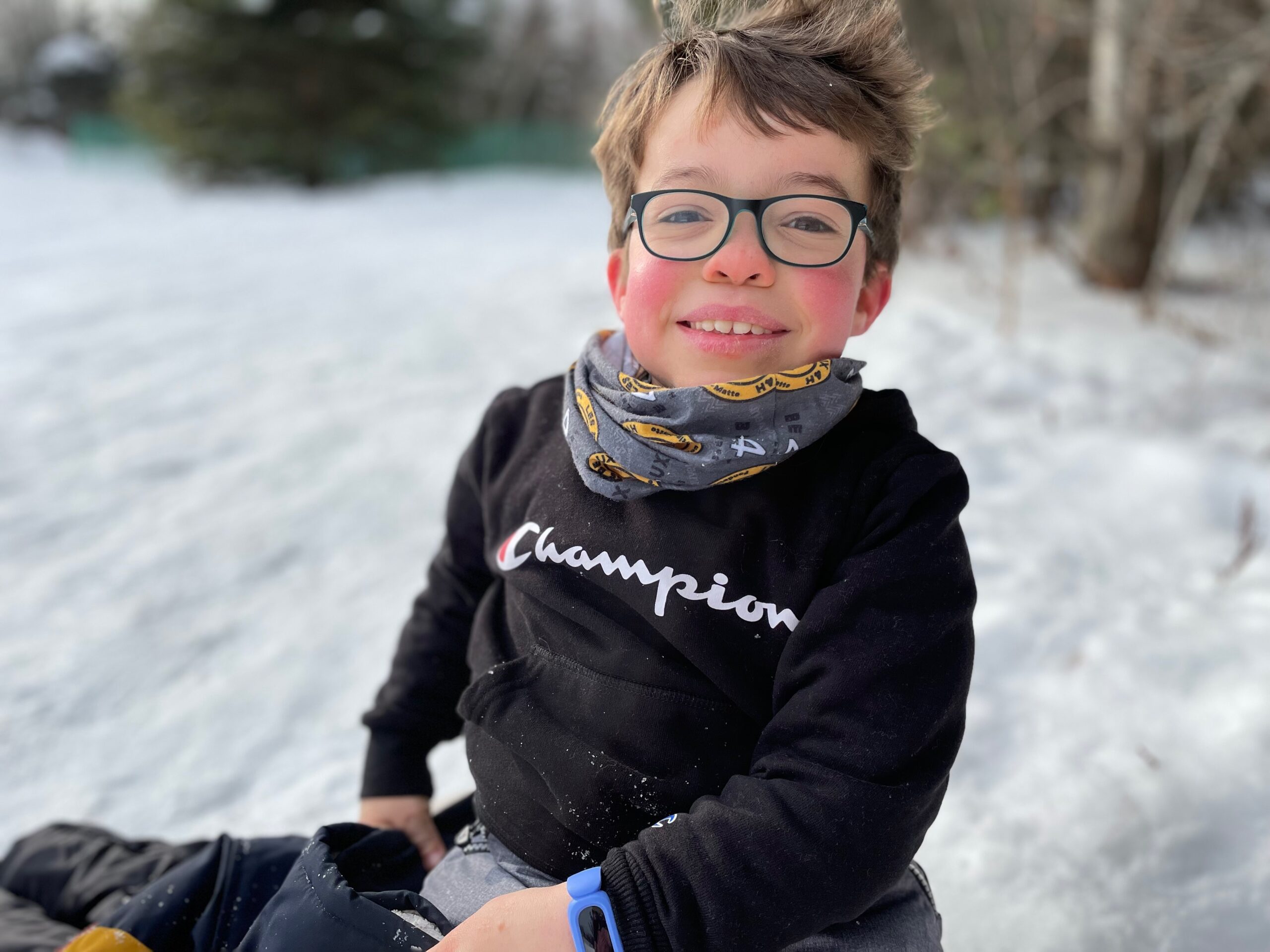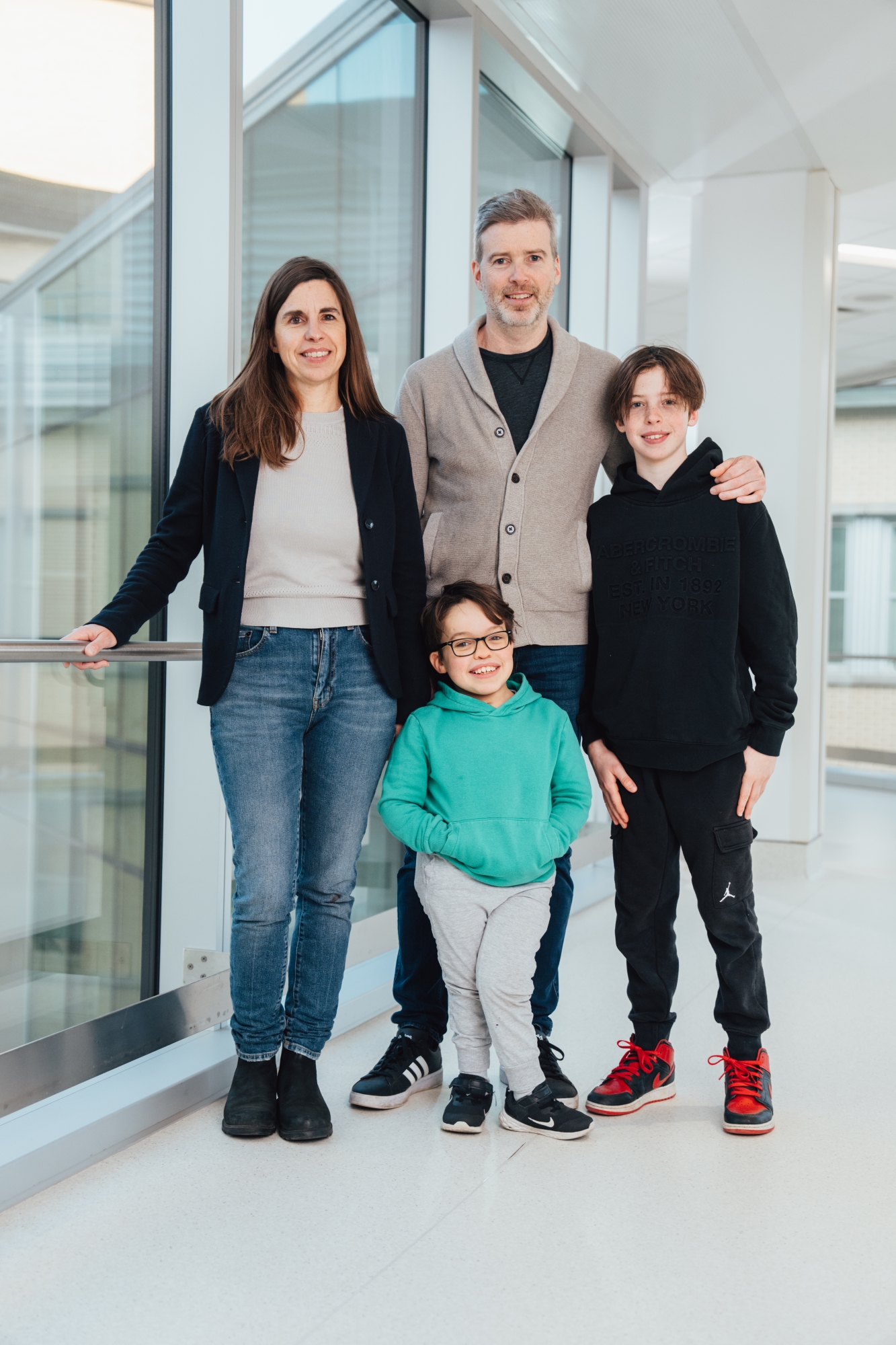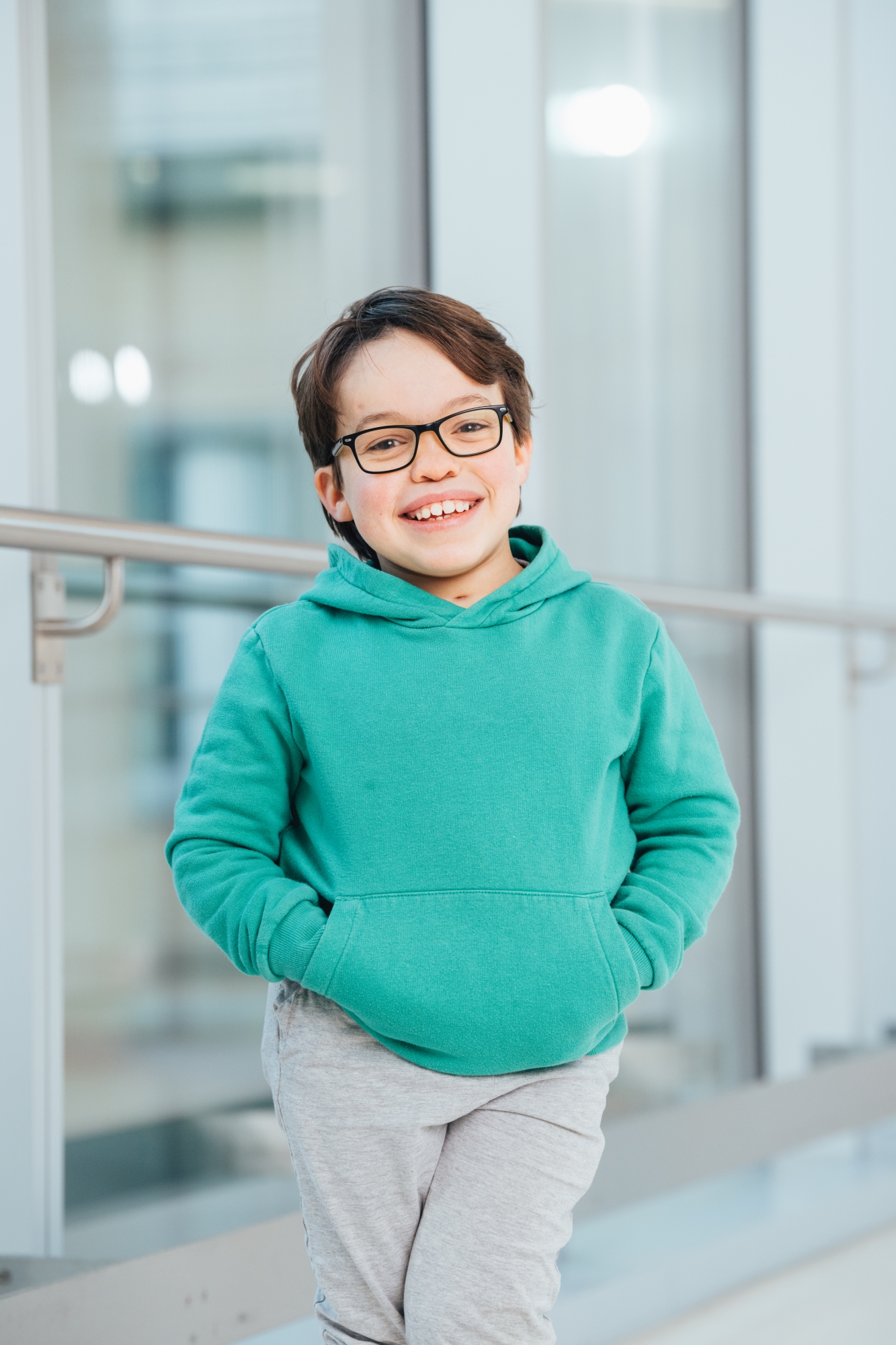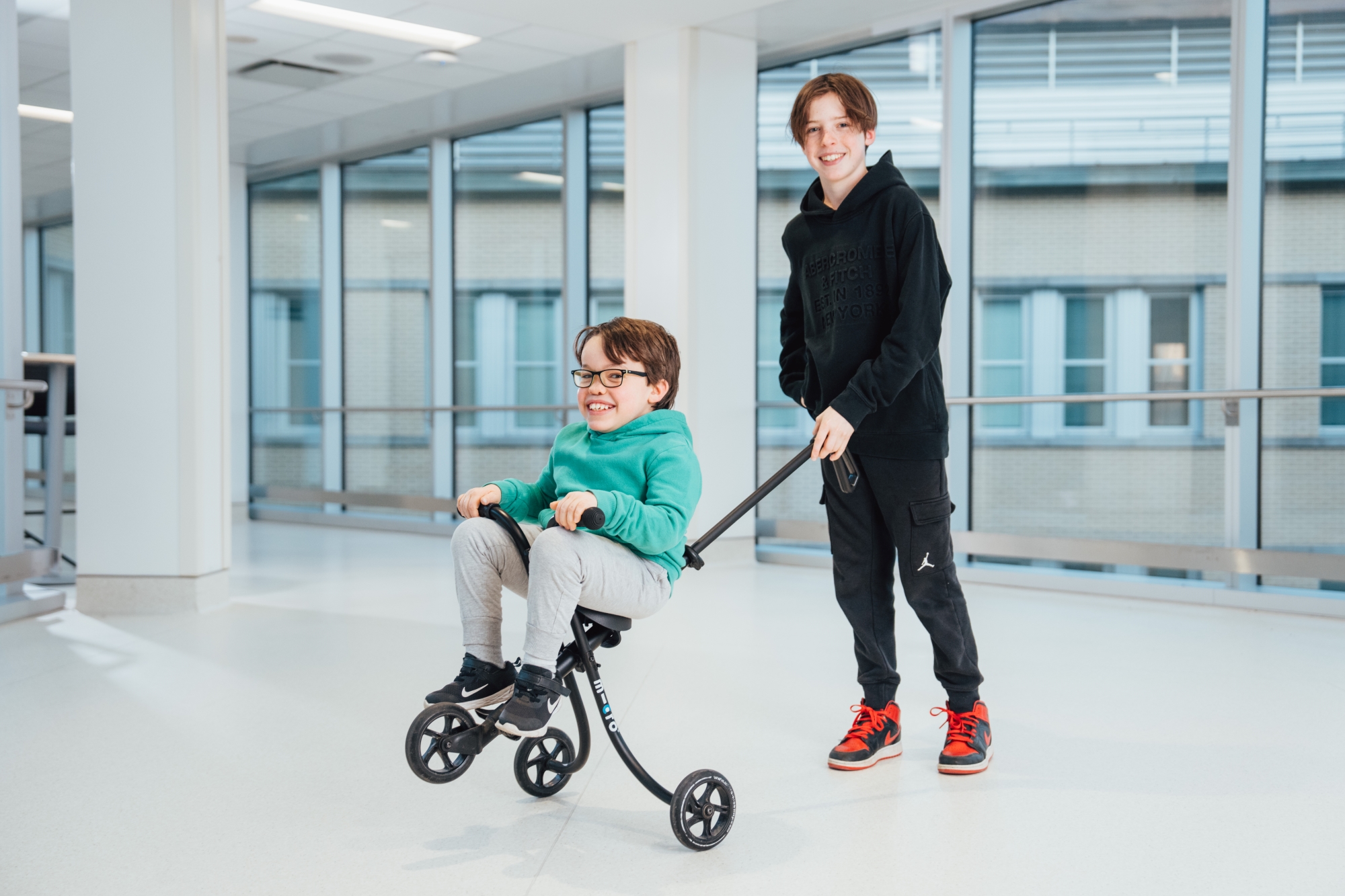Ten-year-old Raphaël has been through more than his fair share of challenges over the past decade. The countless health issues and medical procedures — from a feeding tube as an infant to surgery on his spinal cord — have made his life a veritable obstacle course. The root cause of the bone disease he has been diagnosed with remains a mystery to this day. Fortunately, with every new barrier that he has come up against, Sainte-Justine’s healthcare professionals have been right there by his side, giving him and his family the strength and the courage to carry on. And they can do that because of your generosity.
There was no hint when Raphaël was born of the chaos that was to come. A few weeks afterward, however, he wasn’t gaining any weight. His family doctor was concerned. A full battery of tests was ordered at Sainte-Justine over a three-week period. To no avail.
Around the three-month mark, Raphaël’s growth was still a concern. The doctors at Sainte-Justine didn’t know what was going on. They told his parents that a feeding tube would have to be inserted into his stomach to support his nutritional needs. They also prescribed a daily injection of growth hormone.
That was the first big shock for us. I couldn’t imagine things getting any worse. But it was nothing compared to what we would go through after that.
A flurry of top-level specialists — gastroenterologists, endocrinologists, physiatrists and more — were assigned to his case. They did their best to investigate the root of the problem.
A month later, a diagnosis finally started to take shape. A lump on Raphaël’s back pointed to a bone disease. Sure enough: it turned out to be spondyloepiphyseal dysplasia, a genetic disorder that affects bone growth in the extremities.
The only case of its kind?
The term “spondyloepiphyseal dysplasia” refers to a range of pathologies, and it was unclear at that point to Raphaël’s doctors, despite their tireless efforts, which ones affected him. Without this information, it would be next to impossible to predict how his case would unfold. The uncertainty of such a broad diagnosis can leave families very uneasy. Raphaël’s was no different.
But Dr. Philippe Campeau, a medical geneticist at Sainte-Justine, was determined to get answers. Over the years, he has explored an array of strategies in attempt to unravel the reasons for Raphaël’s growth delays.
“Raphaël and his parents underwent whole genome sequencing, but all that we found was a mutation in the P3H1 gene,” he explained. Mutations in this gene are usually associated with bone fragility, not spondyloepiphyseal dysplasia. And they are typically recessive rather than dominant. In other words, it would take two mutated copies of the gene for a disorder to occur. In Raphaël’s case, however, there was only one, and it seemed to be what was causing his condition. It’s something that has never been seen before with this gene.
I sent Raphaël’s X-rays to bone disorder specialists around the world, but nobody could tell with any certainty what was wrong. I also uploaded information on his mutation to an international platform used by geneticists to see if there were any other similar cases out there, but I couldn’t find a single one. His symptoms are unlike any other.
A graduate student working under Dr. Campeau is currently studying Raphaël’s stem cells, in an attempt to confirm that the mutation in the P3H1 gene is indeed the culprit. The hope is that this information might also eventually be used to develop a personalized treatment strategy.
In cases like Raphaël’s where answers are hard to find, your support is absolutely vital to empowering ongoing research and exploring therapeutic options, especially with the many avenues being made possible by precision medicine. This is one of the focuses of the Grow Beyond campaign, the aim of which is to raise $500 million by 2028 in order to be able to harness the latest technological advances in genomics and other disciplines to transform the lives of children across Quebec.
Ongoing challenges
Until a more precise diagnosis can be made and a specific treatment developed, Raphaël’s care has been entrusted to the Centre de réadaptation Marie Enfant (CRME) at Sainte-Justine. He became a CRME patient when he was two years old. Through the program for amputations and other musculoskeletal disorders, he has been seen by a physiatrist, a team of orthopedic surgeons, a physiotherapist, an occupational therapist, a nutritionist, a psychologist and a social worker. Together, they are doing everything in their power to help him live his best life.
As Raphaël grew older, he was enrolled in daycare and then school. He learned to eat on his own at age one and a half, and he has had no intellectual delays to contend with. He continues to be smaller than his peers, however, and his growth has been monitored very closely.
“The CRME psychologist helped us talk to Raphaël’s friends and teachers to explain why he was different,” said Laetitia. “Other members of the CRME team went to his school to have a closer look at things like his locker, his desk and the stairwells to make sure he could manage safely. They’re the reason everything went as smoothly as it did.”
A couple of years ago, when Raphaël was eight, an anomaly was spotted on an X-ray of his cervical spine. Surgery was recommended to stabilize the vertebrae and keep his bone marrow from being affected, failing which he would be at risk of paralysis and breathing problems.
He was scheduled to be operated on in June 2021. Three months beforehand, the family was dealt another devastating blow when Raphaël was diagnosed with diabetes. From that point onward, they would have to keep a careful eye on what he ate and monitor his blood sugar several times a day with a finger stick check.
On the day of surgery, Raphäel was anesthetized and intubated when his throat began to swell. They stopped everything and transferred him to intensive care, where he was diagnosed with laryngeal stenosis, a narrowing of the upper airway. He was seen by an ENT doctor for several months afterward, and a granuloma was eventually removed surgically.
Finally, in September 2022, the surgical team was able to proceed with the operation on Raphaël’s spine, even though the stenosis complicated matters. They took advantage of the opportunity to insert metal plates in his knees to keep them straight as he grew. Unfortunately, extubating him after the two procedures proved impossible, and he was returned to intensive care.
After a week without any signs of improvement, a tracheostomy was performed. A small surgical incision was made at the base of his neck so he could breathe while he was being extubated. It was only temporary and the opening eventually healed over. Raphaël was also fitted with a halo brace to keep his head still for three months.
These days, Raphaël is doing well and looking to the future with confidence. He is learning how to keep his diabetes under control and he is starting to visit high schools so he can decide where he wants to enrol in two years’ time.
“His bones aren’t growing the way they should, so he’ll probably have to have more surgery later on down the road. Being put under will always be risky with his smaller airway,” said his mother. “But there are no operations scheduled right now, so we’re taking things as they come! Raphaël has been a real champ throughout all of this.”
His family hopes that medical research, fuelled by your generosity, will one day make it possible to have a better idea of what the future holds for him.
We’d like to know what to expect. It’d be great if there was a treatment available to help him grow and have a life like other kids his age.

18th annual Sainte-Justine Winter Triathlon
Raphaël and his family are grateful to the professionals at Sainte-Justine for everything they have done. It is this gratitude that has prompted them to become ambassadors for the Winter Triathlon. The same spirit of perseverance, resourcefulness, endurance and teamwork that has kept them going is what inspires each and every one of the participating athletes. “We’ve received so much from Sainte-Justine that it’s only natural we give some of it back.”
They extend a warm invitation to the business community to strap on their skis, tie up their skates and grab their running shoes, all in support of the 18th annual Sainte-Justine Winter Triathlon on February 16. The goal will be to raise $600,000 to support Sainte-Justine in its mission of excellence.





